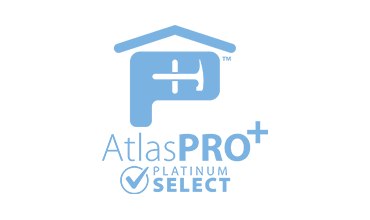An energy-efficient roof is more than just a top layer for your house; it plays a key role in saving energy and reducing costs. As awareness grows around sustainable living, many homeowners are looking for ways to make their homes more energy-efficient. One effective solution is upgrading to an energy-efficient roof, which can greatly impact your home’s energy use.
The benefits of such a roof extend beyond just cost savings. These roofs help maintain a comfortable indoor temperature, reducing the need for excessive heating or cooling. With the right materials and designs, energy-efficient roofs not only improve the comfort of your living space but also extend the life of the roof itself.
Choosing an energy-efficient roof involves understanding the available options and making a decision that best suits your climate and home needs. Whether it’s through selecting reflective materials or special coatings, there are numerous ways to optimize your roof for better energy performance. Understanding these choices can lead to a more sustainable and cost-effective living environment.
Understanding Energy-Efficient Roofs
An energy-efficient roof is designed to reduce the amount of heat absorbed by a building, ultimately helping to lower the energy consumption needed for cooling. This type of roof reflects more sunlight and absorbs less heat than a standard roof. The result is a more stable indoor temperature and reduced reliance on air conditioning.
Various materials, designs, and technologies contribute to a roof’s energy efficiency. Cool roofing materials, for instance, often come in light colors or with reflective coatings that bounce sunlight away from the building. Metal roofs, coated with special paints, can deflect heat effectively. Another option is tile roofs, which have naturally reflective properties and space that allows air circulation to improve cooling.
Green roofs are another innovative design featuring vegetative layers that provide insulation and absorb rainwater. Additionally, solar panels can be incorporated to harness solar energy directly, making a building even more energy independent.
Roof coatings are equally important, offering an extra layer that enhances the roof’s ability to reflect heat. These coatings can be applied to almost any roofing type, providing a versatile option for improving efficiency without needing a complete roof replacement.
By choosing the right combination of materials and designs, homeowners can significantly improve their roof’s energy efficiency, leading to lower utility costs and a more comfortable indoor environment.
Cost Savings and Environmental Impact
Energy-efficient roofs provide substantial savings on utility bills and offer significant environmental benefits. By reducing the heat absorbed by your home, less energy is required for cooling, which translates directly into reduced electricity usage.
For example, during the summer months, an energy-efficient roof can lower cooling costs by around 15-30%, depending on your local climate and roof type. These savings add up quickly, making energy-efficient roofs a smart financial choice over time. The initial investment in high-quality materials and installation pays off, as you see marked decreases in monthly bills.
Besides the direct financial benefits, energy-efficient roofs contribute to a healthier planet. By relying less on energy, which often comes from fossil fuels, you help decrease greenhouse gas emissions. This reduction is crucial in combating climate change and preserving natural resources. For homeowners concerned about sustainability, energy-efficient roofs provide a practical way to lessen their carbon footprint.
Furthermore, some regions offer incentives or rebates for installing energy-efficient roofing systems, which can offset the initial costs. As more homeowners make the switch, the cumulative effect drives a considerable decrease in community-wide energy consumption and environmental impact. Choosing an energy-efficient roof not only saves money but also contributes to a sustainable and eco-friendly future.
Improved Comfort and Durability
Energy-efficient roofs do more than just save money; they also enhance the comfort of your home and improve the durability of the roof itself. By reflecting sunlight and reducing heat absorption, these roofs help regulate indoor temperatures more effectively. This means your home stays cooler in the summer and warmer in the winter, which can make a significant difference in the comfort level of your living space.
When your home maintains a consistent temperature, your HVAC system doesn’t have to work as hard. This not only reduces energy consumption but also extends the life of your heating and cooling equipment, saving you from costly repairs and replacements.
Moreover, energy-efficient roofs are designed to be more durable against the elements. Materials used are often resistant to extreme weather conditions like high winds and heavy rainfall, which can impact traditional roofing materials adversely. The reinforced designs help reduce wear and tear, contributing to a longer roof lifespan.
These roofing options also help manage moisture levels, preventing common problems like mold and mildew. Better durability and moisture management mean fewer maintenance needs and a roof that lasts longer, ultimately providing better protection and value for your home investment.
Choosing the Right Energy-Efficient Roofing Solution
Selecting the right energy-efficient roof for your home involves considering several key factors. Start with your local climate; understanding your area’s weather patterns can guide you in choosing materials that perform best under those conditions. For instance, metal roofs with reflective coatings are excellent in hot climates, while asphalt shingles with added insulation work well in colder areas.
Material type plays a crucial role in energy efficiency. Consider options like metal, tile, or even solar shingles, all offering different advantages depending on their application. Investigate the roof’s color, as lighter shades tend to better reflect heat, lowering cooling costs.
Roof coatings provide another opportunity to enhance energy efficiency. Reflective coatings can be added to existing roofs to increase their solar reflectance. This can be a cost-effective upgrade that improves your roof’s performance without needing a total replacement.
Evaluate your home’s architecture and design to ensure the roofing option you choose complements its style while providing maximum efficiency. Consider future needs as well, such as adding solar panels or insulating further, and how the roofing choice might support those enhancements.
Engaging with an expert can help you navigate these choices, ensuring you select a roofing solution that not only fits your budget but also offers the best return on investment.
Conclusion
Opting for an energy-efficient roof is a wise choice for homeowners looking to save money while minimizing their environmental footprint. These roofs offer enhanced comfort, cost savings, and durability, making them a worthwhile investment for the long term. They adapt to different climates and property needs, ensuring each homeowner finds a solution that aligns with their specific circumstances. By prioritizing energy efficiency, you contribute to a healthier planet and enjoy a more comfortable living space.
Ready to upgrade to an energy-efficient roof? At Over the Top Roofing & Restoration, our roofers in Springfield, MO, specialize in providing roofing options tailored to enhance your home’s efficiency and comfort. Reach out to us for expert advice and installation services, ensuring your new roof meets all your energy-saving needs and more.




